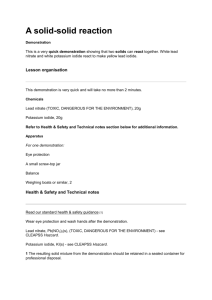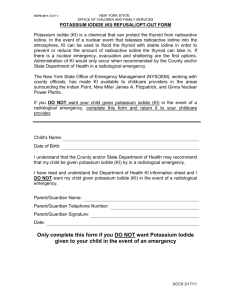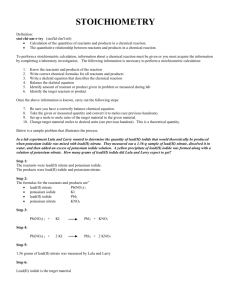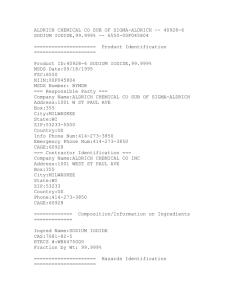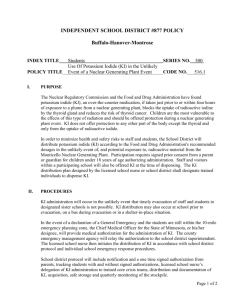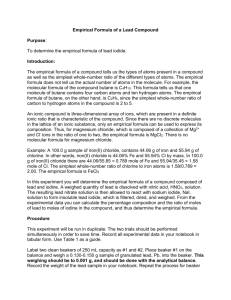Lead Iodide Synthesis Lab Document
advertisement
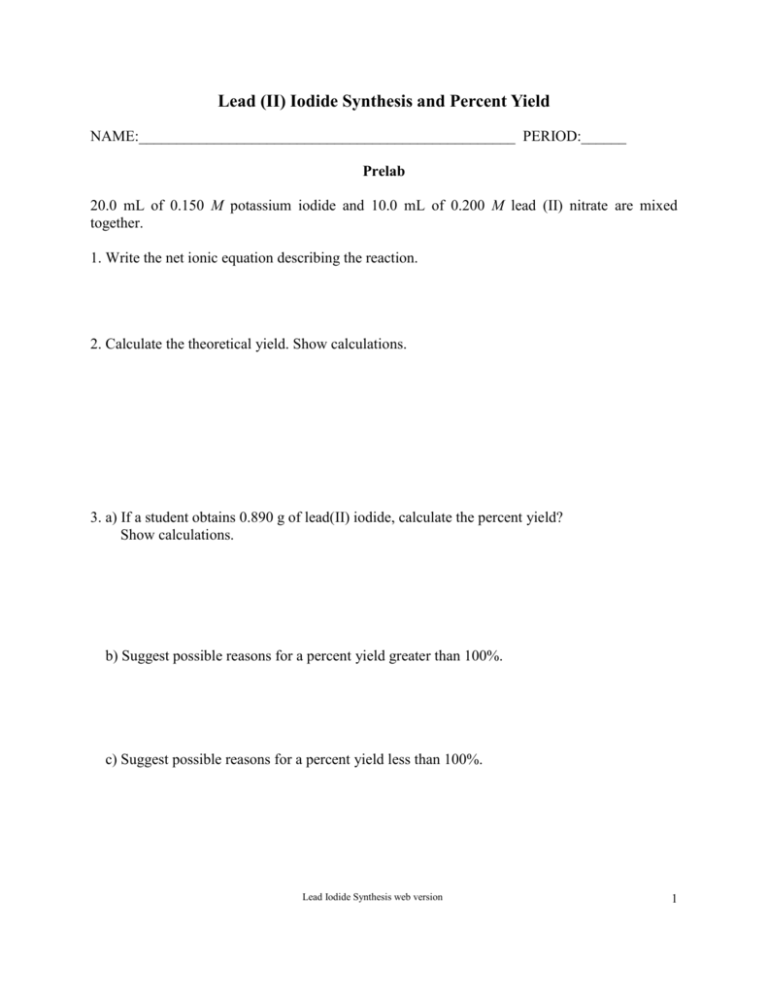
Lead (II) Iodide Synthesis and Percent Yield NAME:__________________________________________________ PERIOD:______ Prelab 20.0 mL of 0.150 M potassium iodide and 10.0 mL of 0.200 M lead (II) nitrate are mixed together. 1. Write the net ionic equation describing the reaction. 2. Calculate the theoretical yield. Show calculations. 3. a) If a student obtains 0.890 g of lead(II) iodide, calculate the percent yield? Show calculations. b) Suggest possible reasons for a percent yield greater than 100%. c) Suggest possible reasons for a percent yield less than 100%. Lead Iodide Synthesis web version 1 Lead (II) Iodide Synthesis and Percent Yield Abstract: In this experiment two reactants undergo a double displacement (precipitation) reaction to produce a precipitate. The limiting reactant, theoretical, actual and percent yields will be determined and reported. Objective: To determine the limiting reactant, theoretical yield, actual yield, and percent yield in a chemical reaction between solutions of potassium iodide and lead (II) nitrate. Introduction: Stoichiometry, mass, and mole relationships have been important throughout the history of chemistry. The simplest whole number relationship between the products and the reactants is a chemical equation. If the masses or number of moles of reactants are known, the chemical equation gives us the means for determining how much product should be formed, assuming a complete reaction. Product recovery is important and this involves some important laboratory techniques, when carrying out a synthesis reaction. When solutions of potassium iodide and lead (II) nitrate are mixed together crystals of lead iodide are formed according to the following chemical equation: 2 KI (aq) + Pb(NO3)2 (aq) PbI2 (s) + 2 KNO3 (aq) Procedure: Lead compounds are toxic. If you get any of the solution or solid on your hands, wash your hands immediately. Clean up any spills immediately. Using a 25.0mL graduated cylinder, measure 20.0mL of 0.0400 M lead (II) nitrate solution (record the volume to 3 decimal places) and transfer it to a 100mL beaker. Using a 50.0mL graduated cylinder, measure 40.0 mL of 0.0500 M potassium iodide solution (record the volume to 3 decimal places) and transfer that to a 100mL separate beaker. Simultaneously, heat the solutions until they both begin to boil. Pour the lead (II) nitrate into the beaker containing the potassium iodide. Allow the mixture to cool for five minutes. Cool the beaker further in ice. While that is cooling, determine the mass of a piece of filter paper, which you have initialed near the edge in pencil. After the mixture has reached room temperature, filter the contents and collect the filtrate in a 150mL beaker. Rinse the solid twice with a small amount of distilled water. Use a squirt or two of ethanol from a wash bottle to rinse the remaining crystals from the beaker into the filter. After the ethanol has drained through the filter wash the sides of the filter paper with additional ethanol to concentrate the crystals at the bottom of the filter cone. After the ethanol has completely drained from the filter, carefully remove the filter paper from the funnel. Keeping the filter paper folded, press it between two paper towels to remove as much liquid as possible. Open up the filter paper and place it on a watch glass. Wash your hands. Place the labeled filter paper on the watch glass and allow it to dry in the oven. When the product is dry, determine the mass of the filter paper and crystals. Dispose of the product and the filtrate according to your instructor’s directions. Wash your hands before leaving the lab. Calculate the limiting reactant, the theoretical yield of lead (II) iodide, the actual yield of lead(II) iodide, and the percent yield of lead(II) iodide. Lead Iodide Synthesis web version 2 Lead (II) Iodide Synthesis and Percent Yield NAME____________________________________________________PERIOD__________ LAB PARTNER____________________________________________COURSE_________ Data Table Volume (mL) of KI solution Molarity of KI solution Volume of Pb(NO3)2 solution Molarity of Pb(NO3)2 solution Identity of the limiting reactant Mass of filter paper and lead(II) iodide Mass of filter paper Color of crystals Mass of lead(II) iodide (Actual Yield) Theoretical Yield of lead(II) iodide Percent yield of lead(II) iodide Calculations: 1. Show your calculations of the limiting reactant: 2. Show your calculation of the theoretical yield: 3. Show your calculation of the percent yield: Conclusions: Write a concise statement of the conclusions of this experiment. Remember what your objective(s) was and include the results obtained as well as how they were used to achieve your objectives. Cite sources of error and explain how each would affect your results (actual yield). Use the back of this sheet. Lead Iodide Synthesis web version 3

